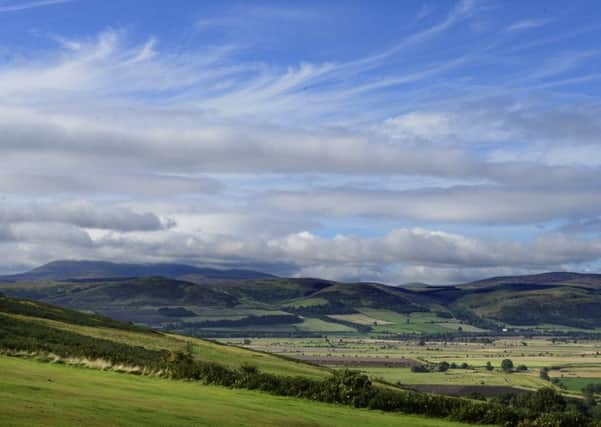Till Valley, Meeting


Archaeology usually raises more questions than answers, but this talk proved that occasionally an excavation can provide a neat and tidy answer.
A large audience was privileged to hear Richard Annis talk at Crookham Village Hall on Durham And Dunbar: Identifying Scottish Soldiers At Palace Green.
Advertisement
Hide AdAdvertisement
Hide AdRichard began on a cautionary note, explaining that it would include graphic photographs of skeletal remains. Setting eyes for the first time on a skeleton in situ is always memorable. Sometimes it is completely intact and easily accessible. This was not one of those occasions.
As soon as human remains are spotted during an excavation all work must halt and the 1857 Burial Act comes into force. Only after a special licence has been obtained can work resume.
The buildings surrounding Palace Green at Durham were detailed. They include the cathedral, castle, old grammar school, bishop’s stables, library and buildings cut through by Windy Gap, an ancient footway.
The area excavated was an overgrown, enclosed piece of neglected ground, sandwiched between buildings and difficult to access. In the late afternoon of a drizzly November day, bones were spotted. This was unexpected as it did not adjoin the burial ground.
Advertisement
Hide AdAdvertisement
Hide AdTo understand the historical context, the speaker led us on a whistle-stop tour of the English Civil War, 1642-51. It was a time of violent upheaval. Few people realise that more people died in these wars than in World War I.
After Charles I had been executed and his son declared King Charles ll in Edinburgh, Oliver Cromwell, leading the English army, was sent North to prevent any movement of the Scots, who were led by Sir David Leslie.
Unfamiliar with the lie of the land and Scottish tactics, Cromwell faced a much larger, but less experienced army than his own. The confrontation took place at The Battle of Dunbar in 1650. It lasted no more than an hour, with a victory for Cromwell, who captured 10,000 Scots prisoners.
So many prisoners posed a problem: this was by far too many to feed, clothe and imprison. Durham and Dunbar are 120 miles apart so moving the men South would not be straight-forward.
Advertisement
Hide AdAdvertisement
Hide AdThe number was reduced when he asked the people of Dunbar to take in wounded and dying soldiers. He may also have released some on condition they surrendered their weapons and agreed not to take up arms in the future.
Some 9,000 prisoners marched over the border, where Sir Arthur Hazelrigg took command. They were in very poor shape. More died as they marched South. Stopping overnight at Morpeth, they resorted to eating cabbages, leaves and roots, which poisoned their bodies and further weakened them.
On arrival at Newcastle they were held in St Nicholas’s Parish Church, before being sent to Durham and held in the cathedral, no longer a religious place. So many had died en-route, many from dysentery, that only 3,000 remained. In Durham they were provided with better food and accommodation. Two months after the battle only a few hundred had survived and men were dying at the rate of 30 per day.
The skeletons found were in a state of disarray. There was no trace of clothing and they were arranged in a disorderly manner. All were male, mainly aged 13 to 25. A third had rickets and many had scurvy, sinusitis and teeth damaged by illness, through occupations or by smoking. Their bones had been gnawed by rats after death.
Advertisement
Hide AdAdvertisement
Hide AdOnly 13 of the 28 bodies had teeth that could be analysed. Five were from Scotland, another five from either Scotland or Northern England, and three from outside Britain. Their bodies indicated their lives had been spent in poverty.
Radio carbon dating proved the men died between 1625 and 1660. It was a short jump to reach the conclusion that they were the bodies of the lost Scottish prisoners of war from the Battle of Dunbar.
Some prisoners were sent as labourers and weavers to other parts of the country. Some were sent to the salt pans at South Shields, some to Cambridge to drain the fens, and others to France and even Barbados.
Possibly the most fortunate were those transported to Virginia and New England as indentured servants. Some 120 left in the Unity for Boston to that country’s first ironworks, where they worked as tree-fellers, eventually earning their freedom. The speaker visited that area, where he was shown the cellar hole of the first dwelling constructed by former prisoners, who by then were marrying and raising families.
Advertisement
Hide AdAdvertisement
Hide AdSo concluded a fascinating talk on a subject unfamiliar to many of us.
Next time you visit Durham, have a coffee in the new cafe built over the burial ground, admire its plaque, and think of those men whose bodies had lain undisturbed for over 300 years.
An excellent website with detailed information is www.scottishprisonersofwar.com